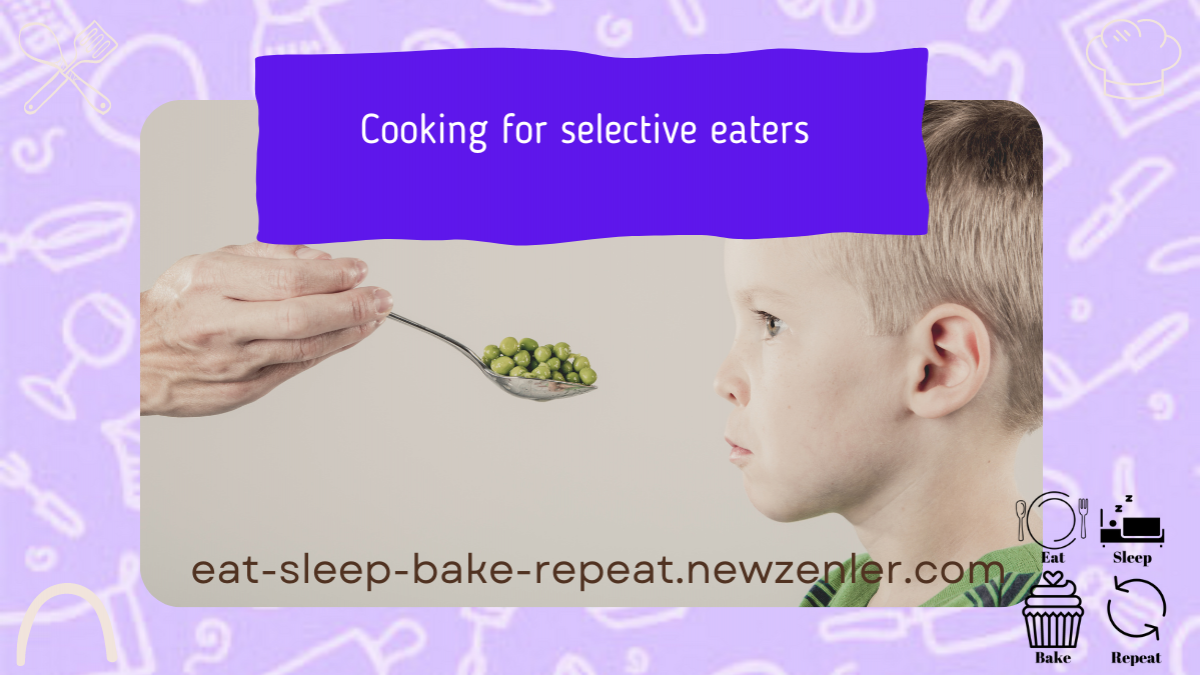Cooking for Selective Eaters

Remember, there's no one-size-fits-all solution. It's all about trial and error, exploring new recipes, and celebrating small victories along the way.
Cooking for a family can be a challenging task on its own, but when you throw in the variable of selective eaters*, it takes the challenge to a whole new level. As a parent, you often find yourself standing in the kitchen, contemplating how to create a meal that everyone will enjoy. It's like trying to solve a complex mathematical equation with ever-changing variables. Fear not, though, in this blog post, we'll explore the world of cooking for selective eaters* and share some strategies to help you navigate this culinary conundrum.
- Embrace the Power of Hidden Goodness: This wouldn't be my first choice of tactics, my kids can spot an onion from 1000 yards, but sometimes when dealing with selective eaters*, it's necessary to become a stealthy chef. Sneak in those nutritious ingredients by incorporating them into dishes in creative ways. Puree vegetables and add them to sauces, blend fruits into smoothies or hide grated veggies in meatballs or burgers. Your selective eaters* will be none the wiser, and you'll feel like a culinary genius.
- Make It a Build-Your-Own Adventure: I am totally on board with this one, chicken salad sandwich - no thanks, chicken salad wraps that you have to build yourself - yes please. Get your picky eaters involved in the cooking process by offering a build-your-own meal. Set up a taco bar, a make-your-own pizza station, or a DIY salad buffet. By giving them control and the opportunity to choose what goes on their plate, they'll be more likely to try new things and develop a sense of ownership over their meal.
- Creative Presentation is Key: Sometimes, it's not the taste but the appearance that can make or break a meal for a selective eater. Get creative with your food presentation. Turn broccoli into "little trees" or create fun shapes with cookie cutters for sandwiches and fruits. The more appealing the food looks, the more likely it is to pique their interest and curiosity. Any leftover bread can be blitzed into breadcrumbs and frozen for future and offcuts of fruit can be mixed into yoghurt and frozen for icy treats.
- Gradual Exposure to New Flavours: Introduce new flavours slowly and gradually. Start by incorporating small amounts of the new ingredient into familiar dishes. This approach allows selective eaters to become accustomed to new flavours without feeling overwhelmed. Over time, their taste buds may become more receptive, and they might surprise you by embracing foods they previously rejected.
- Keep It Positive and Stress-Free: Mealtime should be an enjoyable and stress-free experience for the whole family. Avoid power struggles or forcing your selective eaters* to finish everything on their plate. Instead, create a positive atmosphere by praising their willingness to try new things, even if they only take a small bite. Celebrate their victories, and remember that progress takes time.
Cooking for selective eaters* may feel like an unsolvable puzzle at times, but with a little creativity, patience, and persistence, you can navigate this culinary conundrum. Embrace the power of hidden goodness, involve your picky eaters in the cooking process, and get creative with food presentation. Remember, gradual exposure to new flavours and keeping mealtimes stress-free are key to fostering a positive relationship with food. So, put on your chef's hat, experiment with new recipes, and enjoy the journey of expanding your picky eaters' palates one meal at a time.
* oh there were a lot of asterisks in this blog post.
Selective eater is a term I use instead of fussy or picky. I hope that you agree that it has a less negative vibe, that was my intent. This term focuses on the fact that individuals have specific preferences when it comes to food choices without implying negativity.
Disclaimer: This blog post is intended to provide general tips and strategies for cooking for children with selective eating habits. However, it is important to note that these suggestions are primarily directed toward neurotypical children who do not have diagnosed food restrictions, such as Avoidant/Restrictive Food Intake Disorder (ARFID) or other medical conditions that affect eating habits.
While the strategies discussed in this post may be helpful for some children with mild selective eating tendencies, it is crucial to consult with healthcare professionals, including paediatricians, dietitians, or therapists, when dealing with more severe or medically diagnosed food restrictions.
The information provided in this blog post should not replace personalised advice from healthcare professionals, as each child's dietary needs and requirements may vary. The focus of this post is to provide general suggestions that may be applicable to a broader audience. It is essential to consider any specific dietary recommendations or restrictions provided by healthcare providers or specialists.
Furthermore, parents or caregivers should always prioritize the safety and well-being of their children. Any changes to a child's diet or introduction of new foods should be done gradually and with careful observation for any adverse reactions.
Lastly, this blog post does not intend to diagnose or treat any medical conditions. If you suspect that your child may have an underlying medical issue affecting their eating habits, please consult with a qualified healthcare professional for proper evaluation, diagnosis, and guidance.
Remember, every child is unique, and their dietary needs and restrictions may differ. Always seek professional advice when addressing specific dietary concerns or conditions.
Categories: : chit chat
 Maria Rix
Maria Rix 